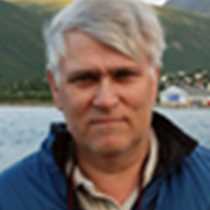In the Ice, Eastern Svalbard
Last night we ventured through the Freemansund, which divides two of the main islands in the Svalbard archipelago. It is Edgeøya and Barentsøya. We are now heading into the real High Arctic. The western side of Spitsbergen is of course cold and rugged but also influenced by the very last remains of the Gulf Stream. Now on the eastern side of Svalbard we have a strong impact of the cold Arctic current, bringing less salty and also very cold water from the east.
The sea ice really covers most of the Arctic Ocean, and here on the eastern side of Svalbard, even during an ordinary summer, you are likely to encounter multi-year old ice drifting around. The ice itself creates a huge ecosystem, which we are about to explore
Before dinner we were already surrounded by ice as the Captain and his crew took us further east. The ice is called broken up pack-ice. First we spotted some one year old ice in loose packs, but soon we got into much thicker, many years older, ice. As the ice is partly broken up, the Captain and his crew were constantly watching for open leads.
Our first encounter was to see how the kittiwakes followed the ship, and as soon as we broke up an ice-flow they all rushed down for a catch. The object they all were scanning for was the polar cod, the food base for all the sea birds and seals in the area. The polar cod is only found in areas with ice but does not reach the size of its much more known "cousin', the cod. The Norway and Svalbard record for a fish caught on line happen to be only 250 grams! It's not the size that counts but the sheer numbers that the birds and other animals are after, like the thick-billed murre and kittiwake together with harp, ringed and bearded seals can have a feeding frenzy.
We also spotted a few walrus laying on the ice-flows and slowly drifting around. But our hard core staff put in an effort to find the "king of the ice", the ice bear. By midnight we had spotted our first, and all through the night more had been seen. As the day made progress, so did our number of polar bears. Several bears came up to investigate the ship, others did what many predators do best, sleep on an ice-flow.
After seeing a polar bear on ice, you fully understand how well this animal is adapted to survive in this extremely harsh environment. Also, the pure landscape with ice drifting in the ocean surely will be remembered, ice is nice!
Last night we ventured through the Freemansund, which divides two of the main islands in the Svalbard archipelago. It is Edgeøya and Barentsøya. We are now heading into the real High Arctic. The western side of Spitsbergen is of course cold and rugged but also influenced by the very last remains of the Gulf Stream. Now on the eastern side of Svalbard we have a strong impact of the cold Arctic current, bringing less salty and also very cold water from the east.
The sea ice really covers most of the Arctic Ocean, and here on the eastern side of Svalbard, even during an ordinary summer, you are likely to encounter multi-year old ice drifting around. The ice itself creates a huge ecosystem, which we are about to explore
Before dinner we were already surrounded by ice as the Captain and his crew took us further east. The ice is called broken up pack-ice. First we spotted some one year old ice in loose packs, but soon we got into much thicker, many years older, ice. As the ice is partly broken up, the Captain and his crew were constantly watching for open leads.
Our first encounter was to see how the kittiwakes followed the ship, and as soon as we broke up an ice-flow they all rushed down for a catch. The object they all were scanning for was the polar cod, the food base for all the sea birds and seals in the area. The polar cod is only found in areas with ice but does not reach the size of its much more known "cousin', the cod. The Norway and Svalbard record for a fish caught on line happen to be only 250 grams! It's not the size that counts but the sheer numbers that the birds and other animals are after, like the thick-billed murre and kittiwake together with harp, ringed and bearded seals can have a feeding frenzy.
We also spotted a few walrus laying on the ice-flows and slowly drifting around. But our hard core staff put in an effort to find the "king of the ice", the ice bear. By midnight we had spotted our first, and all through the night more had been seen. As the day made progress, so did our number of polar bears. Several bears came up to investigate the ship, others did what many predators do best, sleep on an ice-flow.
After seeing a polar bear on ice, you fully understand how well this animal is adapted to survive in this extremely harsh environment. Also, the pure landscape with ice drifting in the ocean surely will be remembered, ice is nice!




